GoPro Hero 13 Black review: Brilliant video performance with boosted HDR and great additional lenses
Can the thirteenth edition of the action camera prove to be the brands best so far?

Updated software, improved battery life, and expansive Lens Mods do help the Hero 13 to be a modest upgrade over its predecessor while bringing some new elements to the table. However, the price is high, and the add-ons increase this further, while low light performance is still lacking. Ideal for some, especially the vlogging cyclist, but not the best for everyone.
-
+
New lens mods are impeccable and easy to use
-
+
Great stills
-
+
Battery life is noticeably better in hot and cold weather
-
+
HDR gives great colour
-
+
Quik app allows for easy editing
-
-
Modest lens upgrade over 12
-
-
Low light performance is lacking
-
-
Lens mods are costly add-ons
-
-
Still need to buy an SD card
-
-
Lacks the overlays of competitors
You can trust Cycling Weekly.

The GoPro Hero 13 Black is, as the name suggests, GoPro’s 13th entry into the Hero line-up, specifically the top of the range Hero Black version. There has also been the Hero Fusion/Max 360˚ camera, Mini, Session, and Hero (standalone), but the Hero Black has been the continual top-spec offering in terms of resolution and is featured in our guide to the best bike and helmet cameras.
The construction
The Hero 13 features the same 8:7 sensor and GP2 image processor as the Hero 12, capable of a top resolution of 5.3K at 60 frames per second (FPS) or 4K at 120 FPS. Likewise, the aspect ratios, digital lens offerings, video smoothing, effects, and 27MP stills remain the same. It’s also waterproof to 10m.
Comparing this to something like the Insta360 Go 2 action camera, and you'll realise it's positively bursting with features.
But what’s different between the new and the old? The Hero 13 uses WiFi 6 rather than 5 for connectivity, which results in faster data transfer speeds. You can also create custom video presets in the camera rather than the accompanying app. The Hero 13 also features a burst slow-mo function for short very high FPS clips for extreme slow-mo. As a new feature, you can connect Bluetooth headphones such as AirPods for voice control or audio recording, while the HDR has been upgraded to the HLG HDR (Hybrid Log Gamma High Dynamic Range).
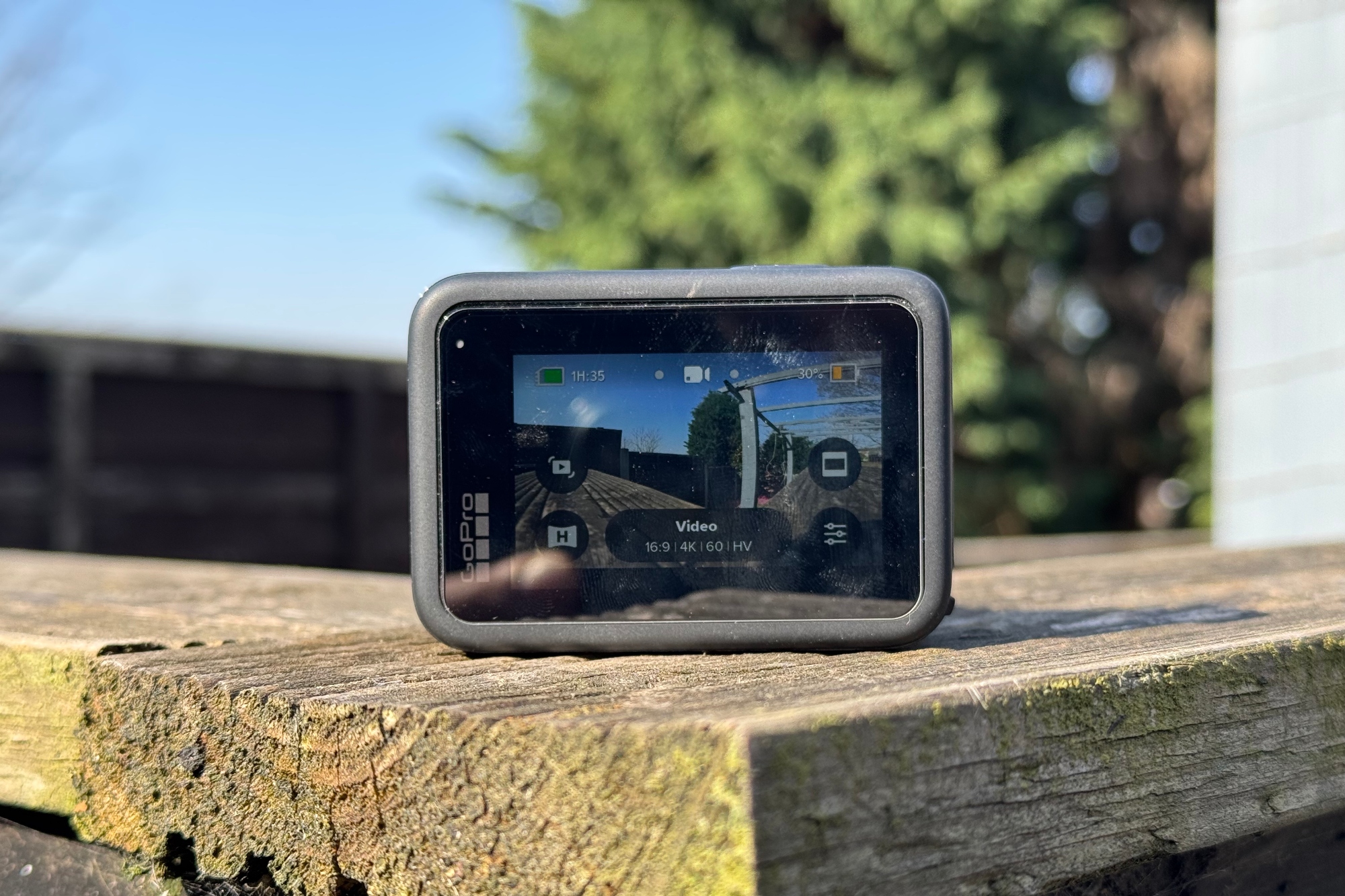
The battery is the main standard hardware difference, with 1900 mAh rather than 1720 as well as improved performance in warmer conditions thanks to greater cooling with the new heat dissipation grill at the front of the camera. GoPro claims this results in a 13% improvement in battery life with airflow on the highest power settings, and 38% better without airflow than the Hero 12.
GoPro has also built on its Lens Mods feature, which allows for different lens options to be fitted to either give a Macro Lens, Anamorphic Lens, Ultra Wide lens, or motion blur with ND filters. Media mods such as speaker and backlight can also be added for those using it for Vlogging.

Hardware wise the Hero 13 has still has the same 2.27 inch touch screen LED at the rear, and 1.4 inch colour LED screen at the front. Charging is again done via USB-C and the fold out legs for the traditional GoPro mounting are still present. However, a universal tripod mounting point has been added as well as a magnetic clip option.
The latest race content, interviews, features, reviews and expert buying guides, direct to your inbox!
Total weight is 60g on our scales while dimensions are 71.8 x 50.8 x 33.6mm. As for colour choices, it’s offered in black and white.
The ride
I’ve been a long time user of GoPro cameras, but not with great frequency. My last purchase was a Hero 8 and using this latest model I found the system itself has remained very simple and easy to understand. If anything it has become even more so.
The main menu is customisable into a fairly basic setup where you can easily point and shoot with determined presets. You can also switch to a more advanced menu option which allows you to adjust the resolution, frame rate, and framing of images and video. I appreciate how easy the buttons are to use, with a power on/off and video on/off button. The device can be turned on with either and starts recording straight away with the video on/off. A touch screen is used on the rear for the majority of controls, and it’s straightforward to use thanks to the 2.27inch size. I never encountered any issues of mis-pressing on-screen buttons.
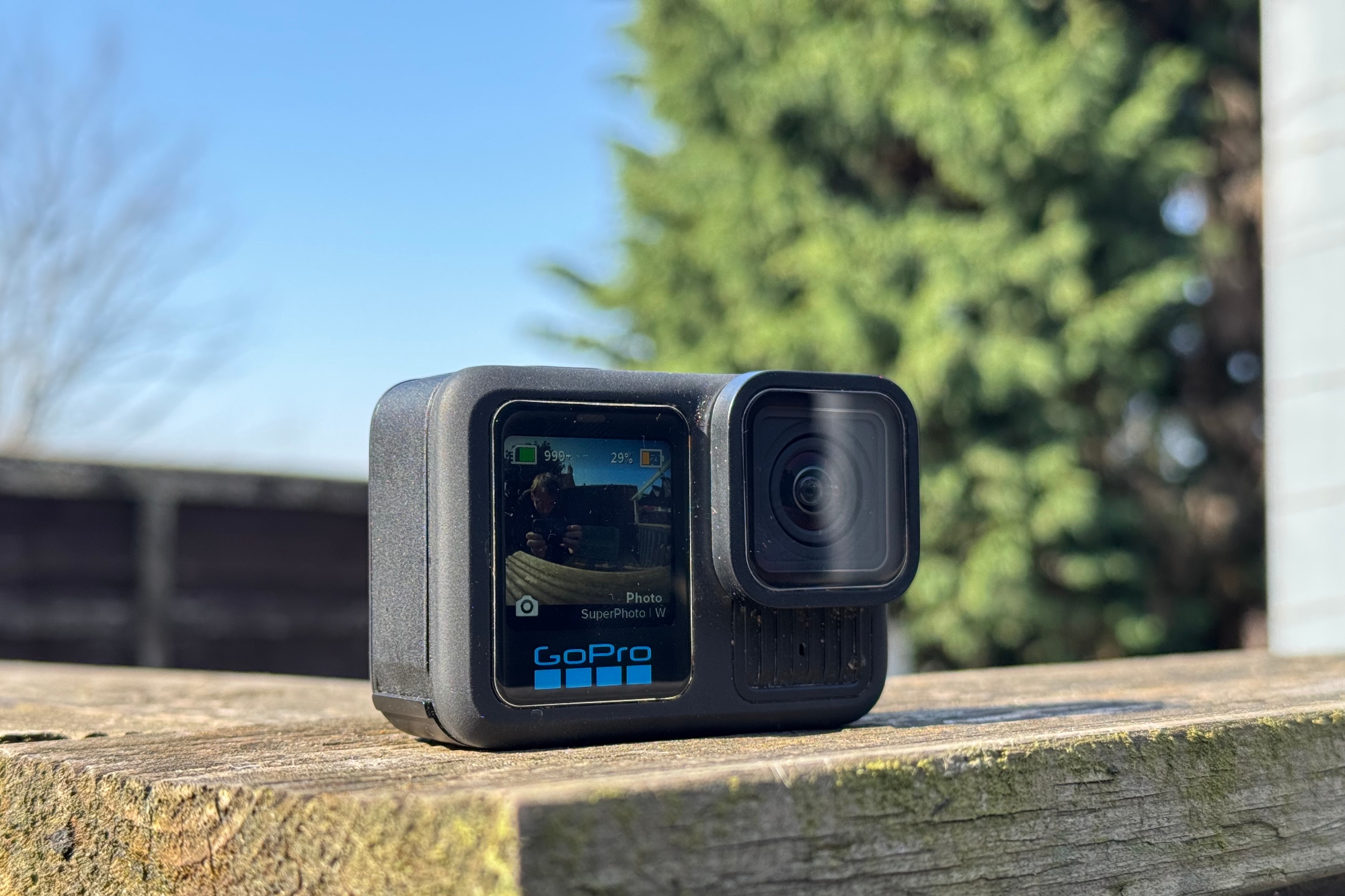
The key selling points of a GoPro, or any action camera, is the image and video quality. This is an area where the GoPro Hero 13 Black does perform brilliantly, for the most part. A big contributor to the quality of the video footage you capture is where you mount the camera. GoPro’s mounting system has become synonymous with most action cameras now - the standard dual-feet attachment with a screw through the centre. This gives a broad array of fitting options with stem/bar/tube mounts, under bike computer mounts, under the saddle, chest mounts, and even mouth pieces to hold. For the most part I opted for under my computer mount or on a top-of-the-stem mount.
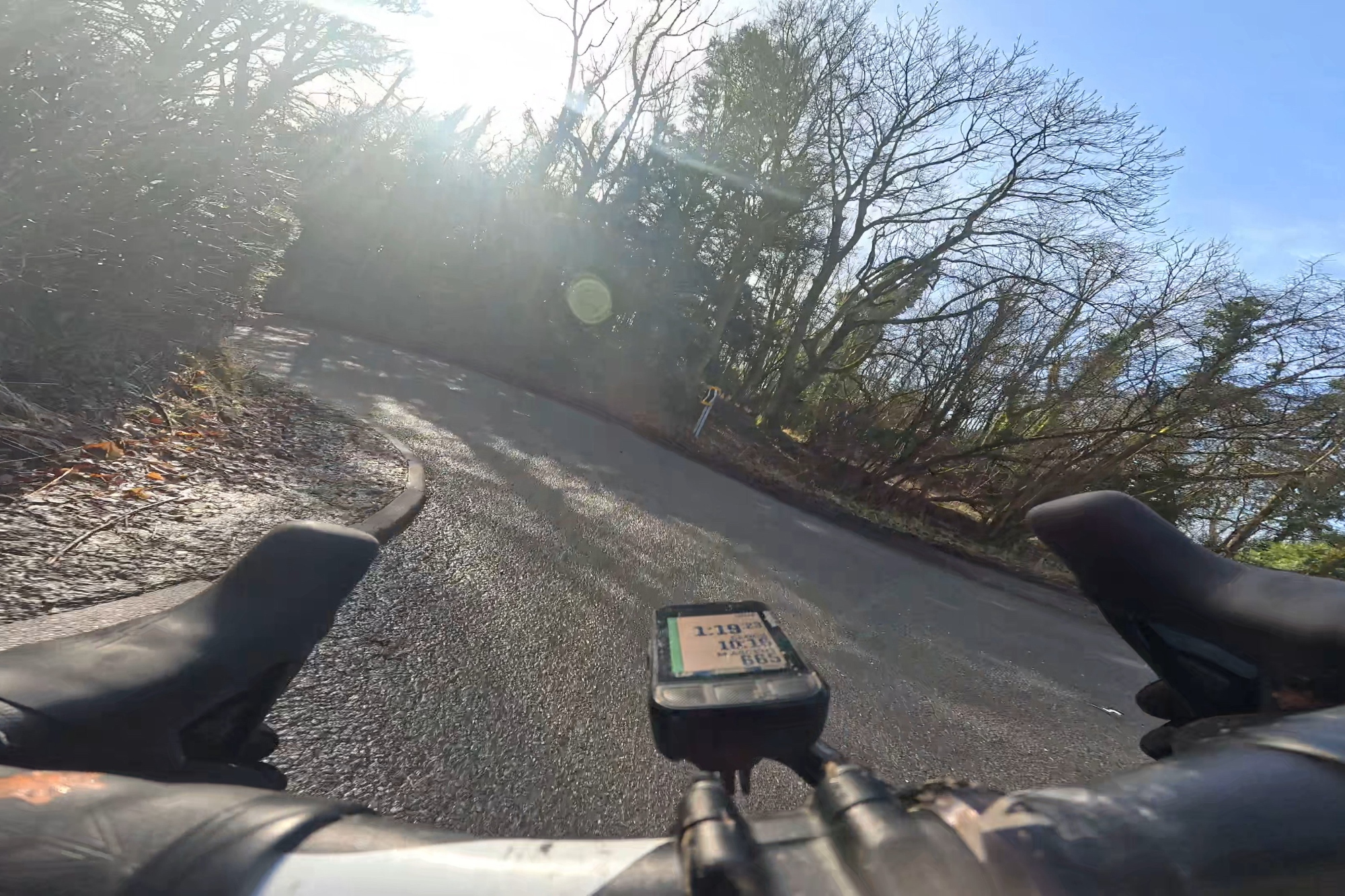
Using the standard lens supplied with the Hero 13, you’re able to get a wide 156˚ field of view (FOV) on the Hyperview setting. It’s worth bearing in mind that as the FOV increases, so too does the fisheye effect which can distort some shapes and lines. At this FOV you can record in the full 5.3K or 4K with a higher frames per second (FPS). Unless you’re exploding the video onto the big screen, 4K is frankly enough definition, and the increased FPS does result in a smoother video clip. A major bonus of GoPro footage is the proprietary HyperSmooth setting, now in its sixth iteration at HyperSmooth 6.0. This is a very impressive element of GoPro cameras and has been a big selling point against its competitors. The HyperSmooth reduces bumps and noise from potholes, rougher off-road terrain, and any other elements that may result in shaky footage. In practice it works supremely well, and still allows for banking angles when cornering, an issue I previously had on the older Hero 8 where the horizon was levelled as part of the stabilisation.
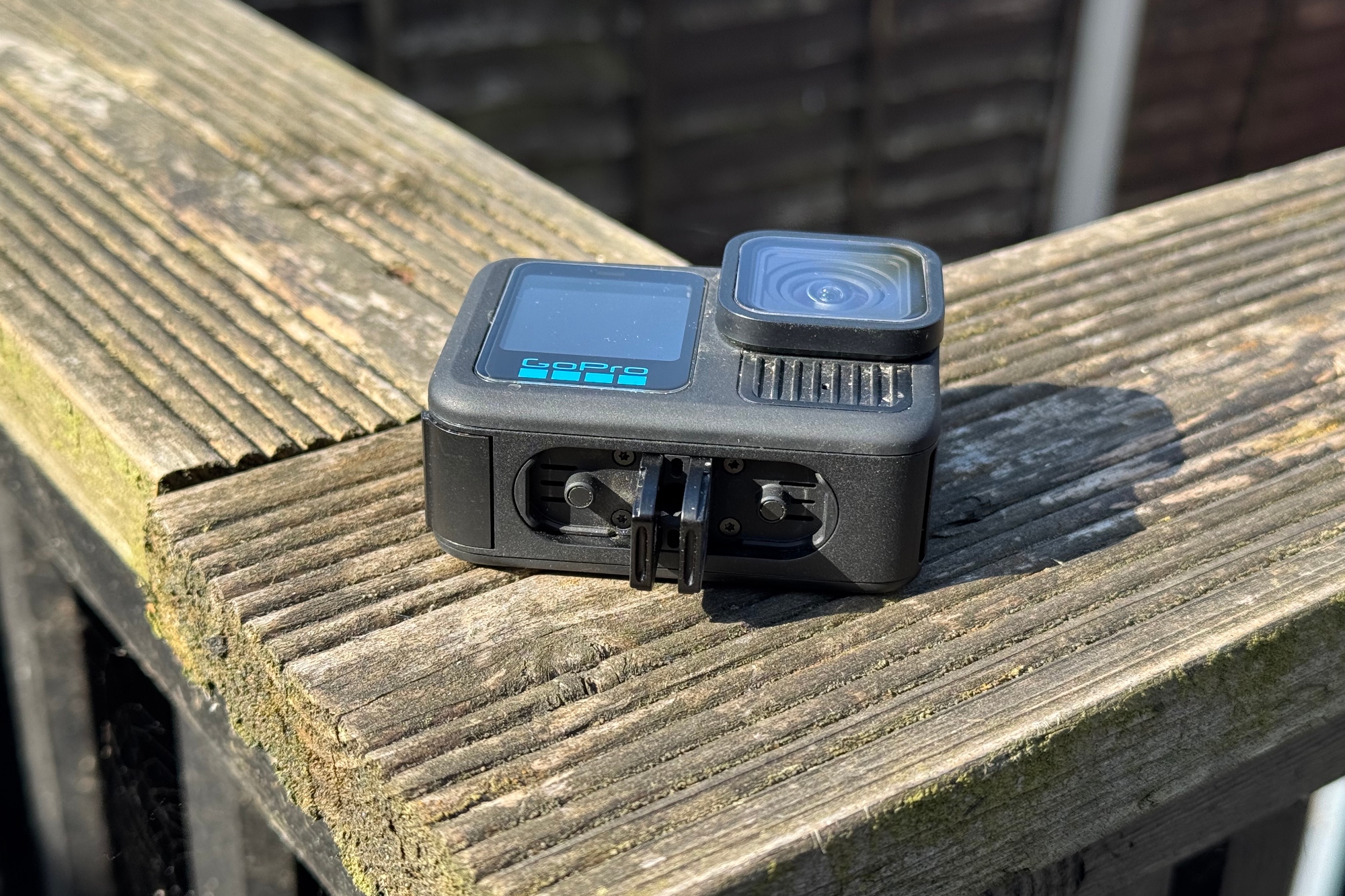
Other unique video features include the Burst Slo-Mo which allows for 400 FPS at 720 resolution. This does compromise the image quality, but can allow for some quite unique slo-mo shots, and is a feature not found on competitors at present. GoPro also has its HLG HDR (Hybrid Log Gamma High Dynamic Range) to enhance video footage colours, saturation and details. These are things that more savvy video/photo editors will likely want to change themselves, but I am not one of them. However, the capacity to capture images in RAW and turn off HLG HDR allows for tinkering and editing for professionals.
Taking us on to the photographs, and the Hero 13 has two means of capturing these. Firstly, stills can be taken on their own, with a 27 megapixel photo, which delivers decent quality in good light. Alternatively, video stills can be captured frame by frame, in a max resolution of 24.7MP. I found this great for capturing shots of myself when a video was taken and I could grab specific frames.
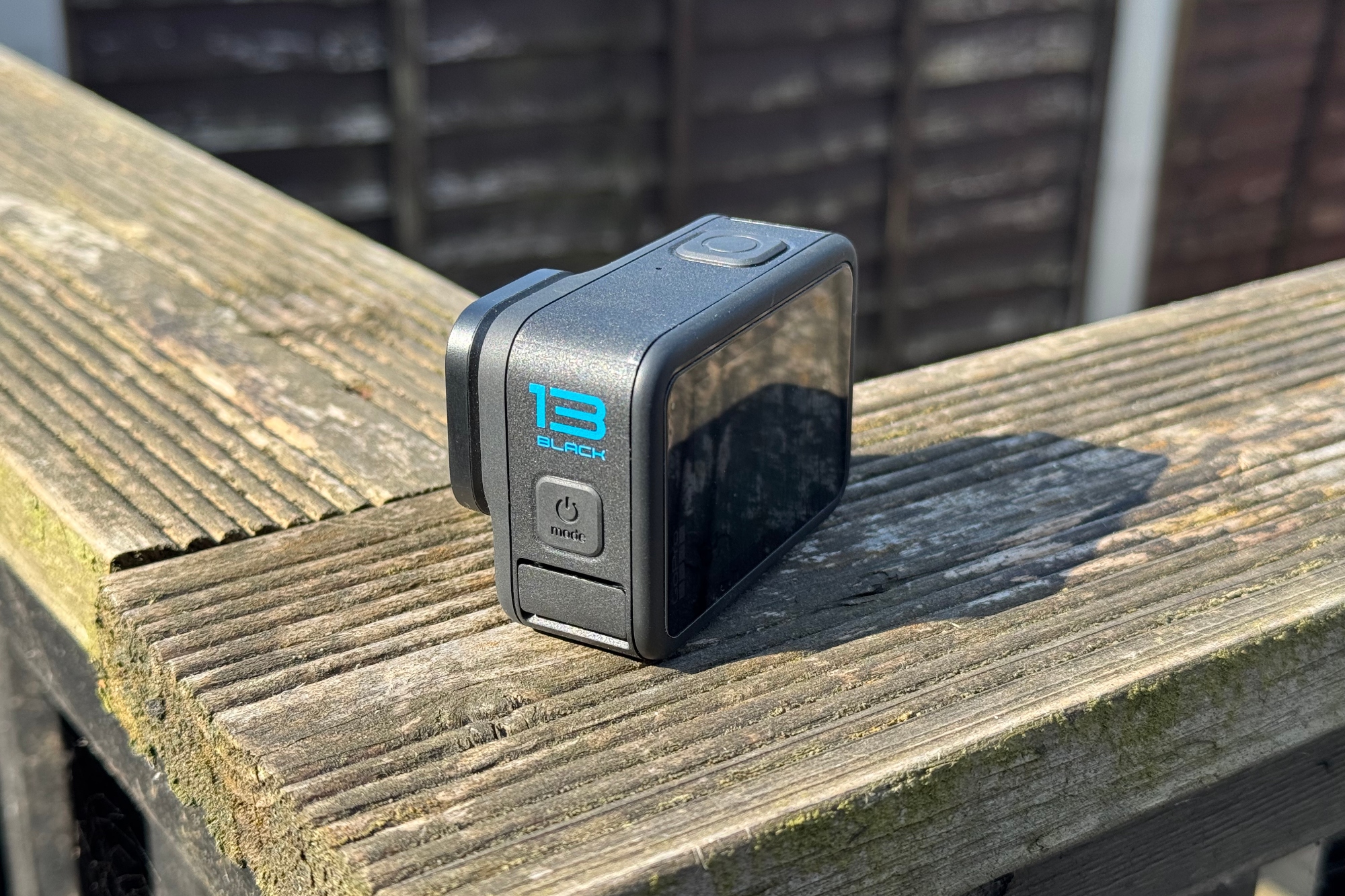
All this is highly impressive, but the Hero 13 is limited by using the same image processor and sensor as the Hero 12. A fault of this setup was that the performance in low-light was sub-par, especially compared to the competition, and this remains an area where the Hero 13 struggles. Fortunately, there were not many occasions where I was getting footage in low light conditions such as very early mornings or evenings. However, if you want to use this camera for safety video footage in the event of an incident, then low light levels are important, especially for winter commuting rides.
Something else that is not new, but has been expanded upon heavily with the Hero 13, are the Lens Mods. Previously the Hero 12 used the Max 2.0 lens for a wider field of view, up to 177˚. That has been replaced by the Ultra Wide lens which expands the FOV by 36% and the vertical FOV by 48% compared to the standard lens, as well as enhanced HyperSmooth and the capacity to film in a 1:1 ratio, which can be cut later to suit media outlets of your choice.
There is the new Macro lens, suitable for real close up of bikes or components, plus ND filters. These add a level of motion blur based on the light conditions that you film in, and put the focus on what’s coming up rather than the crisp and clear visual of all the surroundings that the standard lens gives. Also newly released is the Anamorphic lens, which allows filming in a 21:9 ratio, ideal for YouTubers who want something a bit more cinematic, with lens flare and motion blur to boot. All of these twist on easily enough once the standard lens is removed. However, they all come at an additional cost. It does allow the Hero 13 to have more video features as a whole than much of the competition, but the added cost can’t be ignored.
Something else that has changed for both better and worse, is the new larger 1900mAh Enduro Battery. This is a nice boost as the battery life and performance is significantly longer than the Hero 12, with up to 2.5 hours of continuous recording in the right conditions. I say the right conditions, because temperature and settings have a big impact on battery performance. Using higher resolution settings and higher FPS will drain the battery faster, as will filming in overly hot or cold conditions.
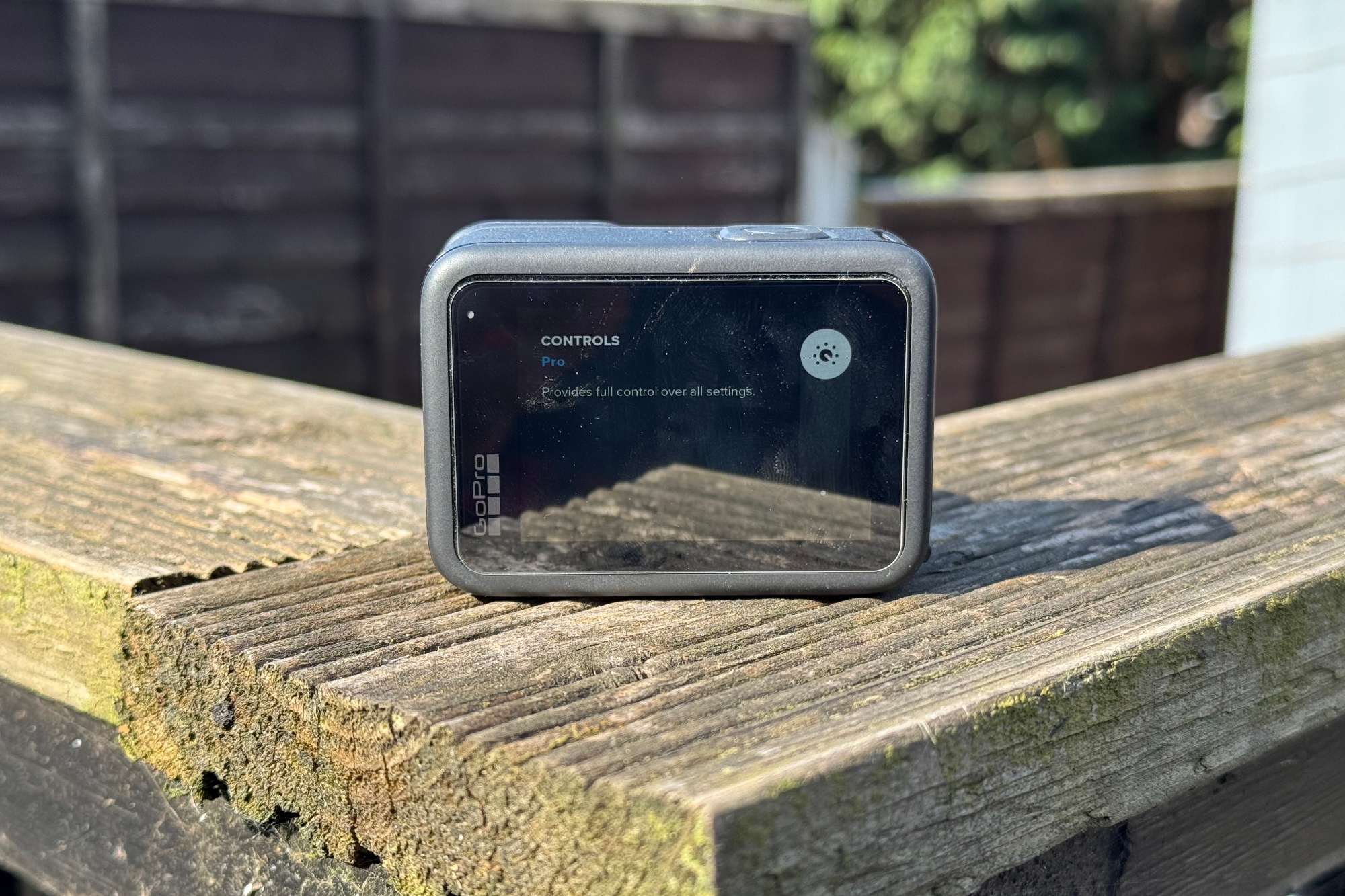
Batteries though have come on a long way since the Hero 8, which struggled to stay on for more than 20 minutes in 5˚C or lower. However, the new Hero 13 has an additional feature to enhance battery life in the shape of ‘cooling gills’. At the front of the camera there is a panel of material under the lens which is ridged. This allows for a greater surface area of material for better heat dissipation. Indeed in properly hot temperatures, 36˚C during a holiday abroad while testing, the battery life was exceptionally good with a full day of video capture on and off, draining the battery by less than half. GoPro claims a 38% improvement in battery life over the Hero 12 with no airflow present. Cycling usually involves some airflow, so the claimed improvement drops to 12%, but still very useful.
The downside for past GoPro users is that this new battery is not backwards compatible, and old batteries are not forward compatible. This means that any GoPro users who had a selection of battery spares for long trips filming, will have to purchase additional new ones. There is the option for a magnetic charging door on the Hero 13 to increase usable battery life without taking the battery out, but again this is a further cost.
Elsewhere, the mounting has been expanded significantly with the option of magnetic mounting, as well as standard tripod screw mounting. Again, the magnetic mounts are an added cost, but it does allow for quick and easy switches of the GoPro position while riding, or removing it for Vlog style footage. I personally found the add-on a really useful feature, and the magnetic mount was more than secure enough for an underside mounting over some rough gravel terrain.
A previous complaint of GoPro cameras for the Vlog style of use, was the microphone. It still picks up some wind noise when riding, although on playback it appears less so than some previous generations. However, you can now connect a pair of AirPods for a dedicated microphone and voice pickup, although this doesn’t eliminate the wind noise issue; the likes of DJI have a superb microphone option that can clip onto the jersey cuff and do a better job at eliminating wind noise.
There are other features too that just don’t quite hit the mark, like the GPS overlays. They are interesting, showing speed, route, gravitational forces and others. However, they are a touch hit and miss with the connection, and the speed was not the most accurate when compared to my bike computer. Tree and cloud cover did seem to have an impact on this, plus the camera needs to be on for a few minutes before filming to get a signal. However it just wasn’t quite refined enough, especially as rival brand Insta360 has offerings that can overlay heart rate and power data for more cycling specific insight. It would be great to see GoPro implement this feature.
The final piece of the GoPro puzzle is the Quik app. This is GoPro’s proprietary companion app for video upload and editing. It can be either a fairly basic adjustment, or as part of a GoPro Premium subscription with access to more editing features. For my own personal use, I found it pretty comprehensive for the edits that I would want to make for social media. From stitching together footage, to grabbing stills for Instagram Reel cover images. You can also adjust the aspect ratio of footage to vertical for TikTok or Reels, or horizontal for more YouTube style videos. The app is fantastic for adjusting camera presets and tailoring those to what you want for specific footage requirements. Additionally it does well at making some smart edits of footage that has been gathered over a day and then cutting and fitting them together in a highlights edit. An added feature is that if you allow permission for the app to access your phone gallery, it takes images from the same days as footage to create these edits. It’s more creative than I am, so I really like this feature. It is sometimes hit and miss to connect, as you need to connect to the Hero 13’s wifi network which was not always as reliable as I would have liked.
A word on the GoPro Premium subscriptions. It is nice to be able to get additional cloud storage, especially with video use; discounts on accessories, and replacement units. It’s decent value at $24.99/ £24.99 for the first year and even $49.99/ £49.99 thereafter is fair. However, I don’t like that you need to pay $99.00/ £99.99 a year to unlock HyperSmooth Pro, essentially gatekeeping some specifications of the camera behind a paywall. Especially given that this feature is actually a decent upgrade, especially when riding over rougher road surfaces where buffeting can impact the HyperSmooth 6.0 function a little.
Value & conclusion
When it comes to value, and comparisons within the market, the two main players that are in competition with the GoPro Hero 13 Black are the Insta360 Ace Pro 2 and the DJI Osmo Action 5 Pro. Both of these feature the same magnetic feet mounting, while the DJI has a wider FOV lens option and the Insta360 has optional ND filters. Both miss out overall on the lens mods that GoPro has.
However it’s the hardware where there are some key differences between them. The Insta360 features 8K resolution footage and higher 50MP stills and photos. The DJI is limited to 4K videos but has 40MP photos. Low light performance is better in both thanks to the larger sensors allowing for more light into the lens. Insta360 also has a better noise isolation capacity which is ideal for road cycling. There are other neat elements to the Insta360, with the flip screen allowing cyclists to see what they are filming without having to get eye-level with the camera, perfect for stem mounted options. Both cameras additionally have a feature where they capture footage for a period before the camera starts recording as long as it is on, so as to avoid missing any must-see footage. Finally, the DJI has 47GB inbuilt storage, so an SD card is not necessary upon purchase.
When recording at lower resolutions, the Hero 13 actually has a higher max FPS. 4K FPS is limited to 60 FPS on the Insta360 save for one configuration option, while the DJI has some FPS limitations, although not as many. The Hero 13 manages 120 FPS at 4K. The Hero 13 also wins out on maximum FPS at 400 for super slo-mo footage, while the image stabilisation is arguably better. The Hero 13 is mixed when it comes to battery life, as it is better than the Insta360, but the DJI wins outright at 240min claimed run time.
There are also many similarities between these three cameras. All use USB C charging, all support up to 1TB storage via Micro SD Card, and all have their own companion app for editing and adjustments.
What it comes down to is what you want most from a camera. I would argue that the DJI offers the best value for money, while the Insta360 offers a better overall spec and video footage capacity. Where the GoPro slots in is the additional extras that turn it into something of a more unique offering based on your requirements. However, those add-ons do not come cheap, and can easily double the price of the camera.
The GoPro Hero 13 Black is, on paper, a rather modest update to the Hero line-up. An unchanged image processor means no enhancements in resolution or low light performance, which is unfortunately lagging against competitors. However, updates to the software and HDR do result in footage that looks richer and more refined than previously. The addition of Lens Mods enhances the scope for video potential and creativity, also setting it slightly apart from others. However, this comes at an added cost, which does make the GoPro Hero 13 not the best value offering on the market, even with improved battery life.
If you need a camera that can only do certain unique elements that the Hero 13 can do, such as the Anamorphic filming option, it may well be worth the money. For more amateur videographers or those that want low light footage that is the best, other competitors will likely be better suited.
Andy is a Sport & Exercise Scientist, fully qualified and experienced Cycling Coach, Sports Director, Freelance Writer, and Performance Consultant. He spent 3 years riding for a UCI cycling team and 7 years as a BC Elite rider, competing in prestigious events such as the Tour of Britain and the Volta a Portugal.
Graduating with a first-class honours degree in Sport & Exercise Sciences, he continues to pursue his interest in research in the field of Sport Science alongside managing his coaching business, ATP Performance. He also works as a Wind Tunnel operator and Performance Consultant at the Silverstone Sports Engineering Hub, working with individuals, teams, and businesses to optimise performance and develop products.
You must confirm your public display name before commenting
Please logout and then login again, you will then be prompted to enter your display name.
